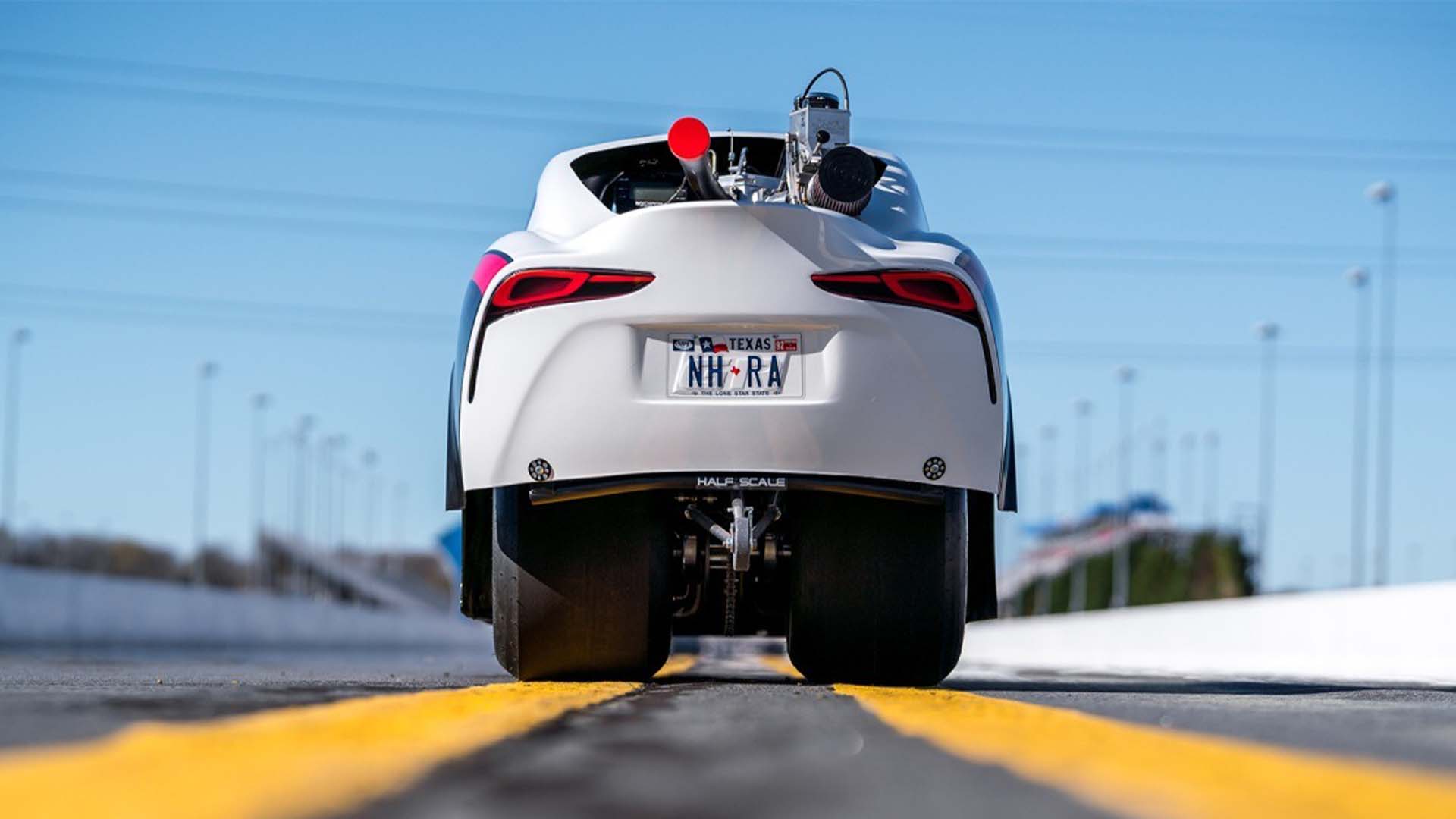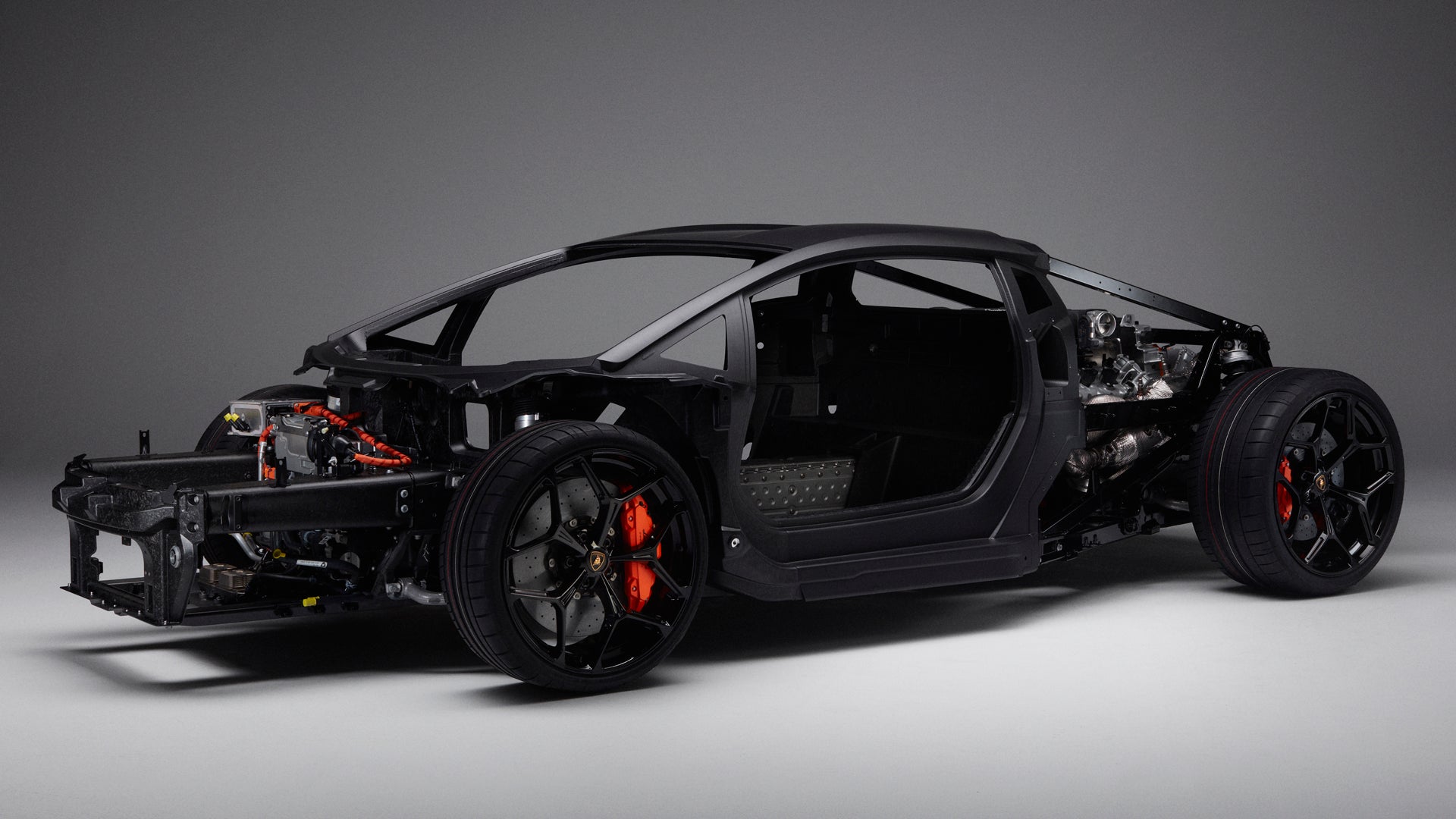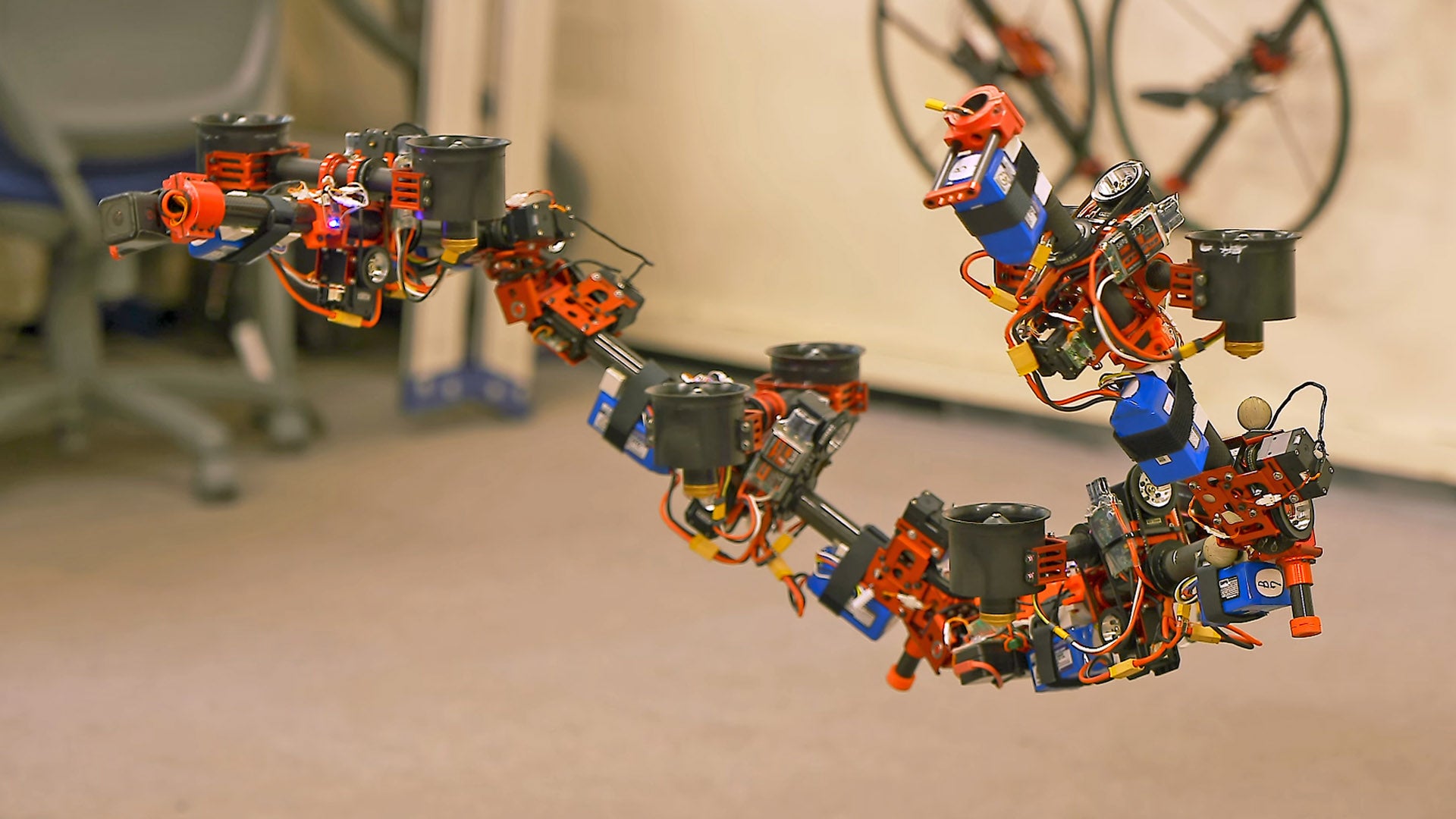Welcome to the Toyota MR2 Spyder (or MR-S, depending on where you live) Car Autance. As you scroll down you’ll learn all about this vehicle’s qualities, features, finer points, and shortcomings. If you’re thinking about buying one of these, want some help maintaining or modifying one, or just want to deepen your knowledge for the next round of car trivia, you’ve come to the right place.
This is a living document that’s updated as we learn (and confirm) new valuable info. Got something to add? Drop a comment! Don’t be shy; the more dialogue we have the better this Car Autance will get.
–Andrew P. Collins, Car Autance Editor-In-Chief
(Disclaimers; Disclosures: Some Car Autance will have links to specific forums, groups, brands, shops, or vendors for parts shopping and such. We have no sponsorship deals or official affiliation with any of them unless explicitly stated. We also have to explicitly state that you should work on your own car and follow our advice at your own risk.)
Contents
There’s a lot of info packed into this Autance. If you’re looking for something specific, hit command/control-F, type one of these terms, and your browser should bring you straight in.
- The Short Story
- Pictures
- Fast Facts
- Spotter’s Guide
- Rarity
- Check This Car Out If…
- Important Trim Levels and Options
- Year-To-Year Changes
- General Reliability and Ownership Costs
- Obscure Details
- Red Flags and Known Issues
- Recalls
- Where To Buy Parts
- Aftermarket Support
- Popular Modifications
- Key Technical Details
- Fluids, Filters, and Capacities
- Factory Service Manuals
- Other References and Resources
- Professional Reviews
- Owner Reviews
- What They’re Worth Now
- Where To Find One For Sale
- What To Ask A Seller
- Competitors To Consider
- Photo Galleries
- Pop Culture References
- Enthusiast Inquiries
- Downloadable Paperback Car Autance
- Comments Disclaimer
The Short Story
Mazda has been consistently offering an affordable, two-seat, rear-wheel-drive convertible since about 1990. Everyone else? Eh, here and there they might have had an offering, but nobody ever really stuck around. The MR2 Spyder was one such offering – originally a coupe or targa top from 1987. At the very end of the ’90s, the MR2 came back for a third act, got the name “Spyder” affixed to it, and became convertible only.
Whereas the Miata is front-engined, like most cars, the MR2 is mid-engined, with the power plant from a pedestrian Toyota Corolla mounted sideways behind the driver. Some consider the MR2 Spyder to be a bit goofy looking, but any sort of mid-engined, rear-wheel-drive couple should be applauded.
Pictures
If you’re looking for more images, scroll on down to the Photo Galleries links toward the end of the Car Autance.
Fast Facts
“MR2” = “Midship Runabout 2-seater.”
An MR2 Spyder is roughly 200 pounds lighter than the same year Mazda Miata.
Automatic cars offered cruise control as an option, but manuals never had it.
Toyota stopped selling the MR2 Spyder in the U.S. back in 2005, citing low sales, but it continued on until 2007 in Mexico.
Spotter’s Guide
MR2 Spyders are distinctive and easy to recognize. There aren’t many tiny two-seat convertibles running around America and even fewer with Toyota emblems. If you’ve never seen one, well, the third-gen MR2 kind of looks like a frog that’s about to leap.
As far as picking which is which trim, these cars are pretty simple. In its five-year U.S. run (2000-2005), the MR2 Spyder only came in one trim, with either a manual or automatic transmission. In fact, the auto wasn’t introduced until 2002. So if you see an automatic transmission’ed car, it’s at least a 2002 or newer.
In 2003, the car got a mild facelift. The lower front valance got a bit more smiley and fog lights were added. Also, Toyota installed a staggered wheel setup; the rear wheel size went up to 16 inches, but the fronts remained 15s. 2000-2002 cars run 15-inch wheels on all four corners. 2003-and-up cars also got color-coded engine air vents, whereas 2000-2002 models had black ones.
Rarity
Only a little over 27,000 MR2 Spyders were sold in the U.S. during its five-year model run. By comparison, Mazda sold more than 78,000 Miatas in the same time period.
Check This Car Out If…
You’re looking for a fun, sporty car that isn’t a Miata. Miata is not always the answer, folks! The MR2 Spyder is a very cheap ticket into the world of mid-engine action; most cars with this layout are pricey to buy and a pain to maintain.
Important Trim Levels and Options
The MR2 only came in one single unnamed trim. From 2002 onward, aside from color, the only option was that of the automatic transmission, called SMT. In 2003, the SMT gained an extra gear, becoming a six-speed unit.
Dealers did offer a color-matched hardtop for sale when this car was new. OEM ones are hard to come by today, expect to pay four-figures. Full Speed Tech or Midship Garage might be able to source one if you’re looking. If you’ve already got one, it’s valuable!
Year-To-Year Changes
2000 Model Year:
- The third-gen MR2 is introduced in 1999 as a 2000 model year car
2001 Model Year:
- Keyless entry added
2002 Model Year:
- Five-speed SMT semi-automatic transmission added as an option
2003 Model Year:
- Facelift year
- Revised exterior styling includes the addition of fog lights, new headlights and taillights (clear lens rear indicator and reverse lamp). Engine air intake vents are now color-matched, rather than black.
- Revised interior includes new seats
- SMT semi-automatic upgraded to six-speed
- Slight chassis bracing added, car gains around 70 pounds
- Paradise Blue Metallic (light blue) color added
- New staggered wheel setup; rear wheels now 16 inches, fronts remained 15 inches
2004 Model Year:
- Limited slip differential available as an option.
2005 Model Year:
- six-disc in-dash CD changer added to options list
General Reliability and Ownership Costs
Despite the few problems that could become serious on early cars, the MR2 is a reasonably cheap car to run. The fact that many other parts are shared with other Toyota vehicles is a boon when it comes to keeping one of these on the road. The SMT semi-automatic cars may be a bit trickier, though, since the SMT is really only able to be serviced by a Toyota dealer due to its rarity.
Obscure Details
The MR2 uses a spaceframe design with body panels that bolt onto it. Not dissimilar to another mid-engined roadster; the Pontiac Fiero.
Red Flags and Known Issues
2000-2002 cars have pre-cat issues. The MR2 Spyder has a “three-way” catalytic converter, made of ceramic materials. Due to heat, the catalyst can become destroyed, creating a catalytic converter clog. Ceramic pieces from the broken catalyst are now swirling in the exhaust, which can get sucked back into the engine, destroying cylinder walls. These problems make their presence known through excessive oil consumption and dramatic power loss. In 2003, the engine revision seems to have put the pre-cat failure issues to rest.
Burning oil. The 1ZZ-FE engine itself was also used in other Toyota vehicles, like the Corolla and Matrix. Early models (2000-2002) have a penchant for burning oil, sometimes as great as one quart every 1,000 miles. Toyota revised the piston rings in 2003, and reports of excessive oil consumption have been reduced.
Semi-auto transmission. The SMT semi-automatic sometimes has issues with the hydraulic and electrical sensors that allow it to function. This manifests in shifts that are unusually slow or clunky. Or, maybe the car intermittently refuses to shift.
Recalls
Currently, there are no recalls for the MR2 Spyder. Yes, even the Takata airbag scandal hasn’t touched the MR2 Spyder.
Key Technical Details
The automatic transmission isn’t a traditional automatic, it’s an automated sequential manual. The basic gearbox designs between the automatic and manual boxes are similar, but the automatic has a series of levers and actuators that do the shifting work for you.
So really, “automatic” may be a bit of a misnomer here. Although the computer works the clutch and changes the gears, there’s no true automatic mode. You’ve still got to use the buttons to tell the car to change gears.
Engine: The MR2 Spyder’s engine, the 1ZZ-FE, is nearly identical to the one that powers the 1998-2007 Toyota Corolla. The 1.8-liter four-cylinder claimed 138 horsepower.
Transmission: Most cars use a five-speed manual, but from 2002 onward, a five-speed (2002) or six-speed (2003-2005) “automatic” was offered.
Drivetrain: Mid-engine rear-wheel drive
Suspension: The car uses MacPherson struts on all four corners. The front tires are narrower than the rears. Depending on the year, the rear wheels may also be larger than the fronts, too.
Wheelbase: 96.5 in; 2451 mm
Overall length: 153 in; 3886 mm
Curb Weight: Just shy of 2,200 pounds
Fluids, Filters, and Capacities
Fuel: Remarkably, this car only requires 87 octane minimum.
Battery Size: 51R
Engine Oil: 5w-30
Oil Filter: The MR2 Spyder uses a spin-on filter that is similar to the Toyota Corolla’s, naturally, since they share an engine. The OEM part number is 90915-YZZF2. Some owners recommend using the K&N HP-1003, which has a nut at the end, facilitating removal from the tight engine bay. The owner’s manual recommends an oil change every 5,000 miles.
Air Filter: Removal of the air filter is a bit trickier than a typical front-engined car. The Toyota OEM part number is 17801-16020-83, and should be changed when it is visibly dirty or roughly every other oil change. Toyota recommends the air filter be replaced every 5,000 miles.
Cabin Air Filter: Fun fact! The MR2 Spyder does not have a cabin air filter, so don’t let anybody sell you one.
Transmission Oil: 75w90, GL4 spec. Toyota recommends changing every 30,000 miles, but some do even sooner depending on how hard the car’s driven. Automatic SMT cars have a special hydraulic system that should be changed every 30,000 miles with special Toyota Genuine Fluid 08886-02206 Sequential Manual Transmission Fluid, only available at a Toyota Dealer.
Transmission Filter: No transmission filter is present on this vehicle.
Differential Oil: The diff is integrated into the transmission, so this also uses 75w90 and the same change-interval applies.
Coolant: MR2 Spyder owners and Toyota recommend using Toyota OEM (or aftermarket equivalent) pink “long-life” coolant. Toyota recommends a coolant flush every 30,000 miles.
Power Steering Fluid: The MR2 Spyder uses a hydraulic steering setup, but the pump itself is driven by an electric motor, not the vehicle’s engine. Unfortunately the OEM hydraulic fluid (08886-01206 Toyota Electro-hydraulic PS Fluid) has been discontinued. These threads here have some documentation as to what aftermarket fluid can be substituted. Right now, it seems that actually, Nissan OEM electro-hydraulic power steering fluid (999MP-EPSF00P) seems to be the most popular substitute.
Brake Fluid: The OEM rating is DOT3 Spec, but owners who do more aggressive driving have opted for DOT4. The main difference being that DOT4 has a higher boiling point and theoretically should be able to withstand more hard use. Toyota does not have a recommended interval for a brake fluid flush, but many MR2 Spyder owners recommend changing the brake fluid once a year.
Clutch Fluid: OEM Clutch fluid is the same as the Vehicle’s brake fluid, or DOT3. There is no recommended service interval for its replacement by Toyota. Some MR2 Spyder owners opt to flush the brake and clutch fluid at the same time – about once a year.
Spark Plugs: Toyota recommends the spark plugs be replaced every 60,000 miles. They should be gapped at 0.044″ and the Toyota OEM part number is 9008091184, but there are many aftermarket replacements with similar or superior quality.
Where To Buy Parts
This car doesn’t require specialty parts, so any local online or offline brick-and-mortar parts store will do.
Aftermarket Support
MonkeyWrench racing is a go-to space for performance upgrades and even swaps to a Honda K-series engine, or the 2ZZ-FE.
Full Speed Tech, referenced above for selling hardtops, has other upgrade parts you might be interested in, too.
Popular Modifications
One common modification is to remove the pre-cats, in an attempt to head off any potential damage that could be caused by their destruction.
The chassis bracing of the 2003+ models is a direct, bolt-on fit to the 2000-2002 models, although some owners say the weight penalty is not worth the additional stiffness.
Less common, but, the 2ZZ-FE engine from the Toyota Celica GTS is a good way to boost the power from 138 HP to 180 HP. It adds a nifty 8,000 RPM redline, too.
Factory Service Manuals
As of this writing you can access a free legit-looking factory service manual for the third-gen (W30) MR2 Spyder here.
Other References and Resources
We’ll add links here if and when we hear about key resources for owners of this car.
Professional Reviews
“2000 Toyota MR2 Spyder First Drive: Toyota sticks to the mid-engine theme, but this time in a roadster. Can you say ‘Toyota Boxster’?” (Car & Driver – April 1, 2000)
at C&D described the MR2 as ” much more civilized” than expected when it was new. I’d imagine journalists would have a significantly different takeaway given the chance to drive a mint one of these today.
“…the ride from the all-strut suspension was astonishingly good, with ride-motion control you wouldn’t believe in a car this small. Actually, low mass is easier to control, but you hardly ever see it done well in cheaper cars. The Spyder permits a little more roll than we expected, but it’s well-damped, and the car takes a firm set in corners.
“The Toyota MR2 Spyder Is the Sports Car You Forgot About” (Doug DeMuro – July 5, 2018)
DeMuro was fascinated by the fact that the MR2 Spyder owner’s manual has a picture of an MR2 Spyder towing a trailer to illustrate Toyota’s official recommendation to please not tow a trailer with an MR2 Spyder. Almost 20 years after the car’s release, it seems he liked the car in a lukewarm kind of way.
“This was kind of a cool idea,” he says. “A mid-engine convertible. Everyone wanted convertibles, rear-wheel-drive convertibles like a Miata, mid-engine makes it better in terms of physics, you sort of, balance the weight in the middle of the car as opposed to sticking it out over one of the wheels like most cars. And yet. It just could have been a little faster.”
Owner Reviews
Mike Spinelli, founder of Jalopnik, host of /DRIVE on NBC, and now liaison-to-the-suits here at Brookline Media (Car Autance’ parent company) had a whole lot to say about his time with his MR2. I mean come on, this is almost a bible by itself:
Mike Spinelli (Feb 24, 2021)
2000 MR2 Spyder; stock; owned 16 years plus
“I rescued my 2000 MR2 from a dealer’s lot back in 2005. The red-on-red-and-black Spyder had been cowering beneath a rotation of RAV4s and Highlanders, a hopeful glint in its bug-like eye.
One Saturday I went in, and after a few half-hearted rounds with a salesman who didn’t bother to hide his disinterest, picked it up for $12,500. Toyota’s eye-searing Absolutely Red paint wouldn’t have been my first choice, but the Spyder was in mint condition and only showed 24,000 miles. I figured I’d keep for a year, give it a few good runs, and move on.
I kept it for 16 years. For the past two of those the Spyder’s been under a tarp in a location remote enough for me not to have to think about it, but close enough for a weekly case of the guilts. I have this recurring nightmare it’s being loaded on a flatbed by an angry clown as the K-A-R-S-Kars-4-Kids song is playing on a huge steam organ, and I wake up screaming with an imaginary tax-deduction receipt balled up in my fist.
Although a crashed hard drive 86’d most of my pictures of it, fond memories of that delightful little bastard live on in soft, gray PROM. Its 1.8-liter, 138-horsepower DOHC inline four (1ZZ-FED), which it shares with the Celica GT, was always punchy and understressed. What that engine lacks in tonality, horsepower and revvy character it redeems in low-end pull and perky throttle response. Perfect shifter throws atop a five-speed manual, whose short gearing serves up a 5,000-rpm sweet spot joyfully, only add to the 2,250-pound roadster’s sincere charm.
It’s a mystery why Toyota didn’t use the higher-output 2ZZ-GE from the Celica GTS (which also powered the Lotus Elise). That shorter-stroke, higher-revving version of Toyota’s standard 1.8-liter, with higher-flow heads designed by Yamaha, was the favored engine swap among Spyder nerds. “Someday,” I said.
Someday never came, but even with the stock powerplant the Spyder loved to run. It would eat hundreds of miles of Hudson Valley b-roads without complaint. Late-night runs around Manhattan island with the top down were electrifying; the Spyder kept composed even while its short suspension travel was crashing over New York’s potholes with an alarming ka-blam. In fast corners, expansion joints would sometimes sneak bump steer into the party, which caused a few hello guardrail! moments over the years.
With an open differential as factory stock the Spyder is a stable highway cruiser. The guys who autocross Spyders usually do some chassis strengthening and anti-roll bar tweaking, and get intimate with trail-braking to make their roadsters pivot around cones. I always wondered what the Spyder would have been like with a limited-slip differential, whether it would give it the urgency it needed, or make it more likely to swap ends in the rain on the Cross Bronx Expressway. Quaife makes a torsen-style diff that fits, but I’ve never tried it.
As it is, the Spyder is a brilliant seven-tenths sports car: Three clicks under the limits of mechanical grip is where it’s the most rewarding to drive. With think-and-you’re-there transient responses and the perfect degree of compliance for the real world, it’s easy to get into a flow. The suspension is as simple as it gets, with struts at all four corners, and the lightly boosted steering, aided by an early EPS unit, is quick and precise, if a bit vaporous in feel. The stock alignment setup, which I never changed, is tuned to break front traction first, although with the engine in the middle and so little weight on the nose (front-rear weight distribution is 43/57), that bias toward understeer can be reassuring.
That is to say, there comes a time in every Spyder owner’s life when he gets to the “what might have been” realization. Once I drove a Lotus Elise and the Spyder on the same day. After a few hours in the Elise, the Spyder feel huge, cushy, and a bit slow. If you’ve ever driven a Mk2 MR2 Turbo, a far higher-performance machine with loads more street cred, you can’t help but wonder what could have been if Toyota had given the Spyder a similar performance path. Then there’s the reality of the Spyder’s relative rarity: If only Toyota sold more Spyders it would have more aftermarket support and a wider range of go-fast parts, which are getting harder to find by the day. If only, if only.
Then again, if you’re considering a Spyder, you’re likely past the point of caring about winning every street challenge. Spyder life is about chilling out on a great road after a tough day. It’s also about being economical with the stuff you take with you. In a Spyder, you have two choices with cargo: jam a duffel bag into the compartment behind the seats or throw it on the floor (or in the passenger’s lap), which can work because of the exceptional legroom. Expect the Miata guys to laugh at you about this, because they will.
Owing to the Spyder’s pedestrian roots (it’s largely a backwards Celica), it’s reliable and easy to maintain. Over the years, I replaced the starter, the remote-release cable for the engine cover (under warranty), and a few batteries, and just did the usual scheduled stuff, but that was it for 60,000 miles. I kept an eye out for the Spyder community’s wolf at the door, the ceramic pre-cat degradation issues some owners have reported, but problems never arose.
Of course, like most roadsters, the convertible top’s fabric degraded, so before I get the poor thing back on the road I’ll have to address it.
That is, if the angry clown doesn’t get to it first.”
Most of Spinelli’s work is behind the scenes these days, but check out his Pinterest board it’s amazing!
Own or owned one of these and want to share your thoughts? Hit up in the comments or email [email protected].
What They’re Worth Now
These cars are still worth a fair amount of money as of this writing. An early model, with more than 100,000 miles still is worth at least $4,500. Later models with lower miles have been seen listed for more than $10,000. The SMT semi-automatic transmissions reduce value somewhat.
Where To Find One For Sale
The MR2 Spyder was rare. Like I mentioned, less than 30,000 cars were sold in the United States. Searching AutoTrader, AutoTempest, Craigslist, and eBay may net you some results. Regular checks on forums like Spyderchat might show listings from owners selling off their old ones.
What To Ask A Seller
Speaking of Spyderchat, that site has a great guide on what to look for when you’re looking at a used one. Maybe that’s your next stop after this Car Autance!
Otherwise:
Check the oil, is it low? If so, ask “why?”
“Is there any excessive oil consumption?”
“Have any pre-cat issues been addressed or repaired?”
Competitors To Consider
The natural rival is the Mazda Miata (NB, NC generations). The Miata is much more common than the MR2 Spyder, and a newer one could likely be had for less money.
The BMW Z4 is plusher and faster than the MR2 Spyder. It also comes with a well-sorted, traditional automatic transmission if you so desire.
The Honda Civic Del Sol, yeah, it’s front-wheel-drive, but these tend to be cheaper than MR2 Spyders and there are oodles of aftermarket parts available.
Photo Galleries
Favcars.com has a decent MR-S gallery and another one for non-Japanese MR2s. You’ll find a few more pages on Netcarshow.
Casually searching Toyota’s official media archives netted a grand total of three (3) MR2 Spyder images.
Pop Culture References
The Japanese market Toyota MR-S used by Ken Kogashiwa, a formidable rival to Takumi in Initial D Project D.
Enthusiast Inquiries
Every car has a collection of common questions that pop up in forums and Facebook groups whenever new blood joins in. We hope a lot of those have been answered above, but here are some MR2/MR-S FAQs we wanted to dig into.
Are there any ways to make the MR2 faster? Yeah, a few tuners (like Monkeywrench Racing, mentioned earlier) offer supercharger setups or swaps to the higher-revving 2ZZ-GE engine from the Celica GT-S.
I don’t want my engine to blow up from a catalytic converter failure. What can I do? A post-2003 car most likely will not suffer from cat failure. 2000-2002 cars, some owners have opted to remove the converters entirely.
Don’t some of these come with LSD? (Limited Slip Differential). How do I check? This guide here is a nifty way to check. Long story, short, there should be a sticker on the driver’s side door jamb. 01-A = open differential. 01-B = LSD.
Downloadable Paperback Car Autance
If you’re old school and like to keep reference notes on paper, or you’re just a completionist and want a free accessory for your third-gen MR2, you can download and print out this Paperback Car Autance! Well, you have to also print it to put it on paper. But you knew what we meant.
Think of it like an owner’s manual supplement. Keep it in your car and your days of waiting for slow internet on your phone at the auto parts store are over.
Comments Below
You’ve reached the end of the Toyota MR2 Spyder Car Autance and are about to scroll into the comment section. If any questions were left unanswered in the text above, try posing it in the space below! Unsolicited MR2 tips are also welcome.









